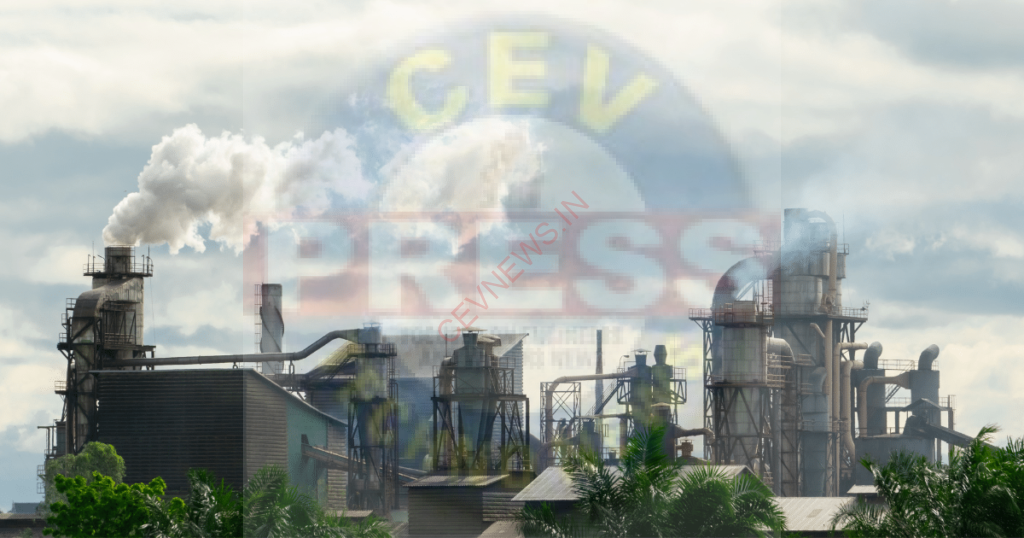THE COST TO CURE ENVIRONMENTAL DAMAGE IN INDIAN INDUSTRIAL ZONES
The Cost to Cure Environmental Damage in Indian Industrial Zones
Environmental damage in Indian industrial zones has become a pressing concern, with significant implications for public health, biodiversity, and sustainable development. Addressing this issue involves understanding the costs associated with curing or mitigating environmental harm. This article delves into the various aspects of these costs, with a focus on industrial zones in India.
1. Overview of Environmental Damage in Indian Industrial Zones
Industrial zones in India have historically been major contributors to environmental degradation. Key pollutants include:
- Air Pollution: Emissions from factories, power plants, and vehicular traffic.
- Water Pollution: Discharge of untreated industrial effluents into rivers, lakes, and groundwater.
- Soil Contamination: Hazardous waste disposal leading to long-term soil degradation.

2. Factors Influencing the Cost to Cure
The cost to cure environmental damage varies significantly depending on several factors:
- Extent of Damage: The severity and scale of pollution determine the overall remediation cost.
- Type of Pollutant: Different pollutants require specific treatment methods, influencing costs.
- Location: The proximity of the industrial zone to residential areas, water bodies, and agricultural lands impacts the cost of remediation.
3. Remediation Techniques and Associated Costs
Several techniques are used to cure environmental damage, each with distinct costs:
- Air Pollution Control: Installation of air filters, scrubbers, and emission control systems can be expensive but are crucial for reducing airborne toxins.
- Water Treatment: Setting up effluent treatment plants (ETPs) and wastewater recycling systems is necessary to mitigate water pollution, with costs varying based on technology and scale.
- Soil Remediation: Techniques such as bioremediation, soil washing, and chemical treatment are employed to restore contaminated soils, with costs depending on the contamination level and treatment method.
4. Government Regulations and Compliance Costs
The Indian government has implemented various regulations to address environmental damage in industrial zones:
- The Environment Protection Act, 1986: Mandates industries to comply with environmental standards, with penalties for non-compliance.
- The Water (Prevention and Control of Pollution) Act, 1974: Requires industries to treat wastewater before discharge, leading to increased operational costs.
- The Air (Prevention and Control of Pollution) Act, 1981: Imposes restrictions on air emissions, necessitating investments in pollution control technologies.
5. Case Studies: Cost Analysis of Environmental Remediation
Examining specific case studies provides insight into the cost dynamics of environmental remediation:
- Vapi Industrial Zone, Gujarat: One of the most polluted industrial zones in India, where the cost of remediation has been estimated at several hundred crores, focusing on air and water pollution control.
- Patancheru Industrial Area, Telangana: Known for severe water pollution, with remediation costs involving the establishment of centralized effluent treatment plants and ongoing monitoring.
6. Financial Mechanisms and Funding Sources
To manage the cost of curing environmental damage, various financial mechanisms are available:
- Polluter Pays Principle: Industries are held financially responsible for the environmental damage they cause, covering the cost of remediation.
- Government Subsidies: Subsidies and incentives are provided to industries adopting green technologies and pollution control measures.
- Environmental Funds: Dedicated funds such as the National Clean Energy Fund (NCEF) support environmental remediation projects.
7. Long-term Economic Implications
Investing in the cure of environmental damage has long-term economic benefits:
- Improved Public Health: Reducing pollution levels leads to lower healthcare costs and improved quality of life.
- Sustainable Industrial Growth: Cleaner industrial zones attract investments and support sustainable development goals.
- Biodiversity Conservation: Effective remediation helps preserve biodiversity and maintain ecological balance.
The cost to cure environmental damage in Indian industrial zones is substantial but essential for ensuring a sustainable future. While industries bear significant costs, the long-term benefits to public health, economic growth, and environmental sustainability far outweigh the expenditures. A collaborative effort between the government, industry, and society is crucial to effectively address and mitigate environmental damage in India’s industrial zones.


